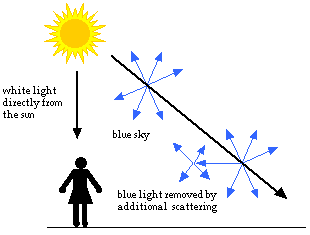Warren, I'm kind of glad you started this thread. I've been considering something along similar lines.
I'm not sure about blue being the
only habitable sky colour, but from what I've picked up watching science programmes and some online research, the colour of the star a planet is orbiting would have an effect upon the light levels and light reflection on the planet's surface.
That may seem obvious, but it means, for instance, that on a planet orbiting a red star, plant leaves would appear almost black, as they would adapt to absorb pretty much all the radiation. On Earth, with a warmer, yellow star, they only need to absorb a portion of the light and the rest is 'reflected' off, which we see as green colour. Before any physicists jump on me, I know this is a very simplistic explanation, incorrectly termed.
Anyway, following this line of reasoning (plants appearing black), I'm assuming that planets orbiting cooler (orange,red) stars would have some very cold, heavily shaded areas, the rock hues would be different and, if there were seas, they might appear much darker, perhaps even purple-black. So, could the sky not be different as well? With a 'darker' star, there would probably be less planetary surface albedo, so (possibly) the sky would be darker, less 'solid' blue, perhaps making other planets in the system more visible during the day. That is speculation on my part.
Alternatively, on a hotter, brighter star, the sky might be even more 'solidly' blue, although the exact hue might be different from ours. Again, plant and surface colours could be different from what we are used to, so it might alter the perception of the world - like walking through a grey city makes everything look grey unless it's a very bright, sunny day.
Hmm, sorry, this has gone on much longer than I intended

.


